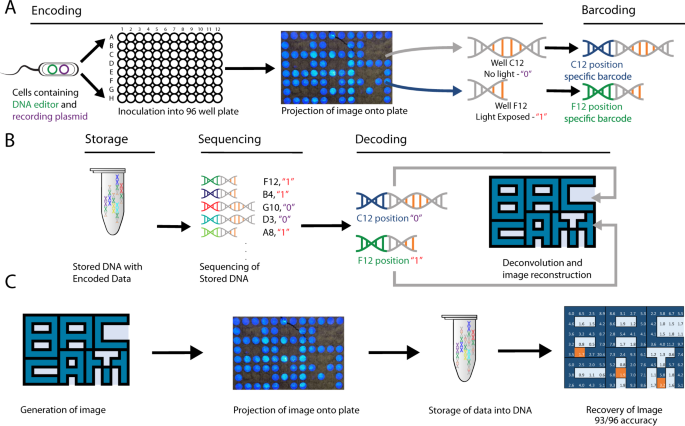2023-07-11 シンガポール国立大学(NUS)
◆従来のDNA保存方法を超える革新的な手法であり、データ保存業界に大きな影響を与える可能性があります。この手法は、データ超過に対応し、リソースを効率的に利用する新たなデータ保存モデルを提供します。
<関連情報>
- https://news.nus.edu.sg/capturing-the-immense-potential-of-microscopic-dna-for-data-storage/
- https://www.nature.com/articles/s41467-023-38876-w
DNAに直接画像を取り込み保存する生物カメラ A biological camera that captures and stores images directly into DNA
Cheng Kai Lim,Jing Wui Yeoh,Aurelius Andrew Kunartama,Wen Shan Yew & Chueh Loo Poh
Nature Communications Published:03 July 2023
DOI:https://doi.org/10.1038/s41467-023-38876-w

Abstract
The increasing integration between biological and digital interfaces has led to heightened interest in utilizing biological materials to store digital data, with the most promising one involving the storage of data within defined sequences of DNA that are created by de novo DNA synthesis. However, there is a lack of methods that can obviate the need for de novo DNA synthesis, which tends to be costly and inefficient. Here, in this work, we detail a method of capturing 2-dimensional light patterns into DNA, by utilizing optogenetic circuits to record light exposure into DNA, encoding spatial locations with barcoding, and retrieving stored images via high-throughput next-generation sequencing. We demonstrate the encoding of multiple images into DNA, totaling 1152 bits, selective image retrieval, as well as robustness to drying, heat and UV. We also demonstrate successful multiplexing using multiple wavelengths of light, capturing 2 different images simultaneously using red and blue light. This work thus establishes a ‘living digital camera’, paving the way towards integrating biological systems with digital devices.


